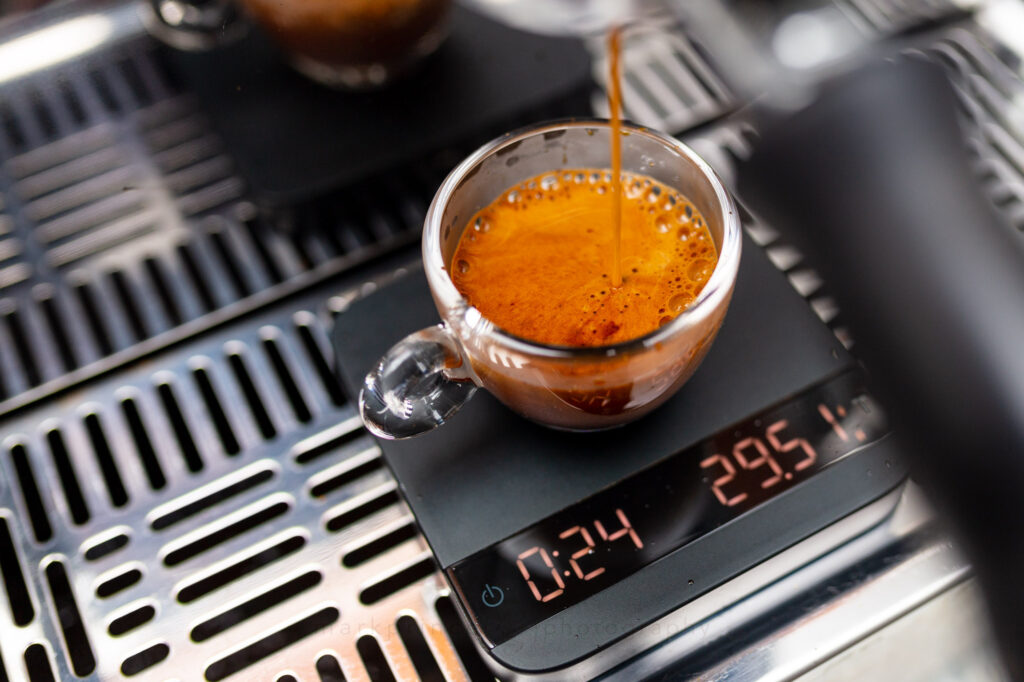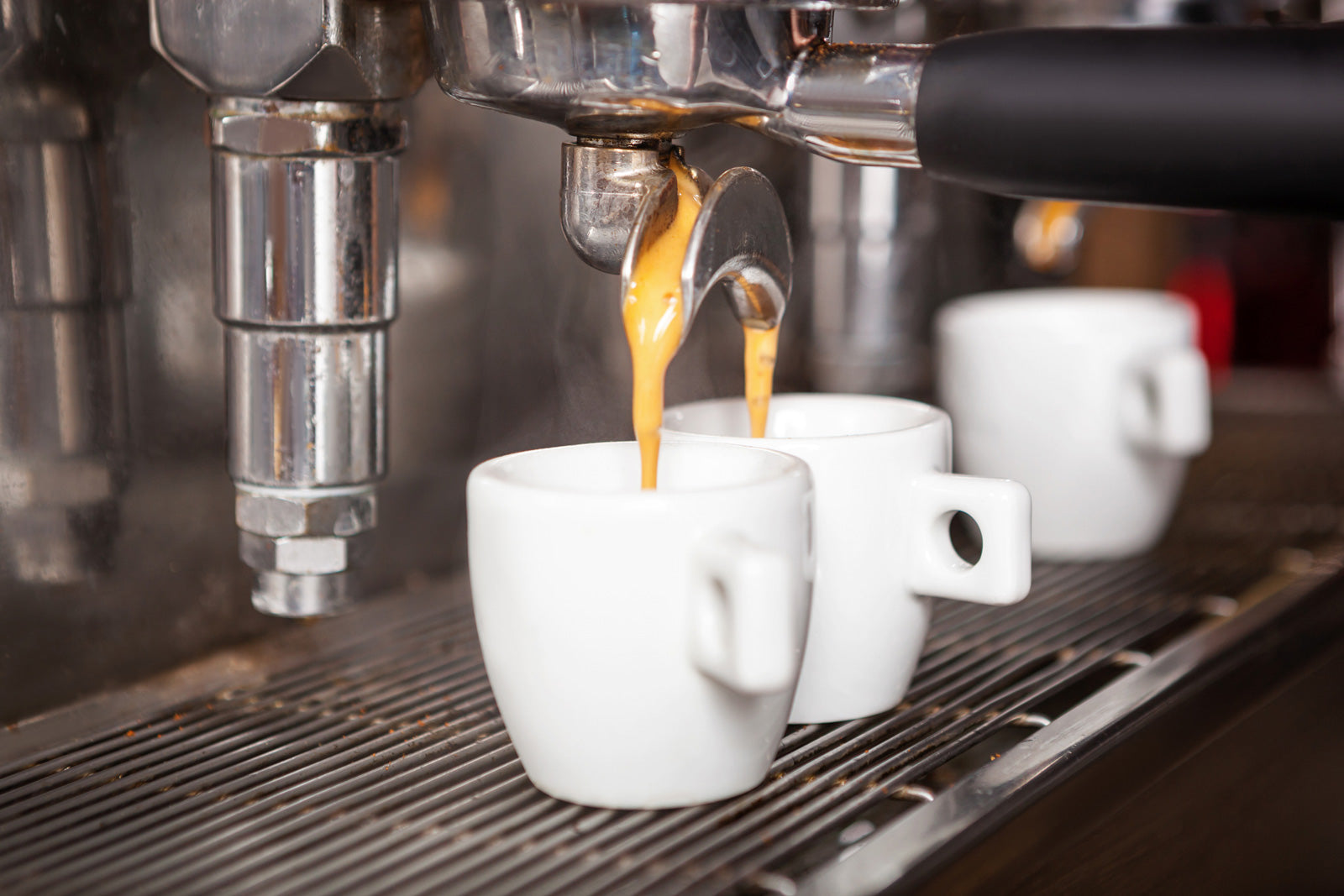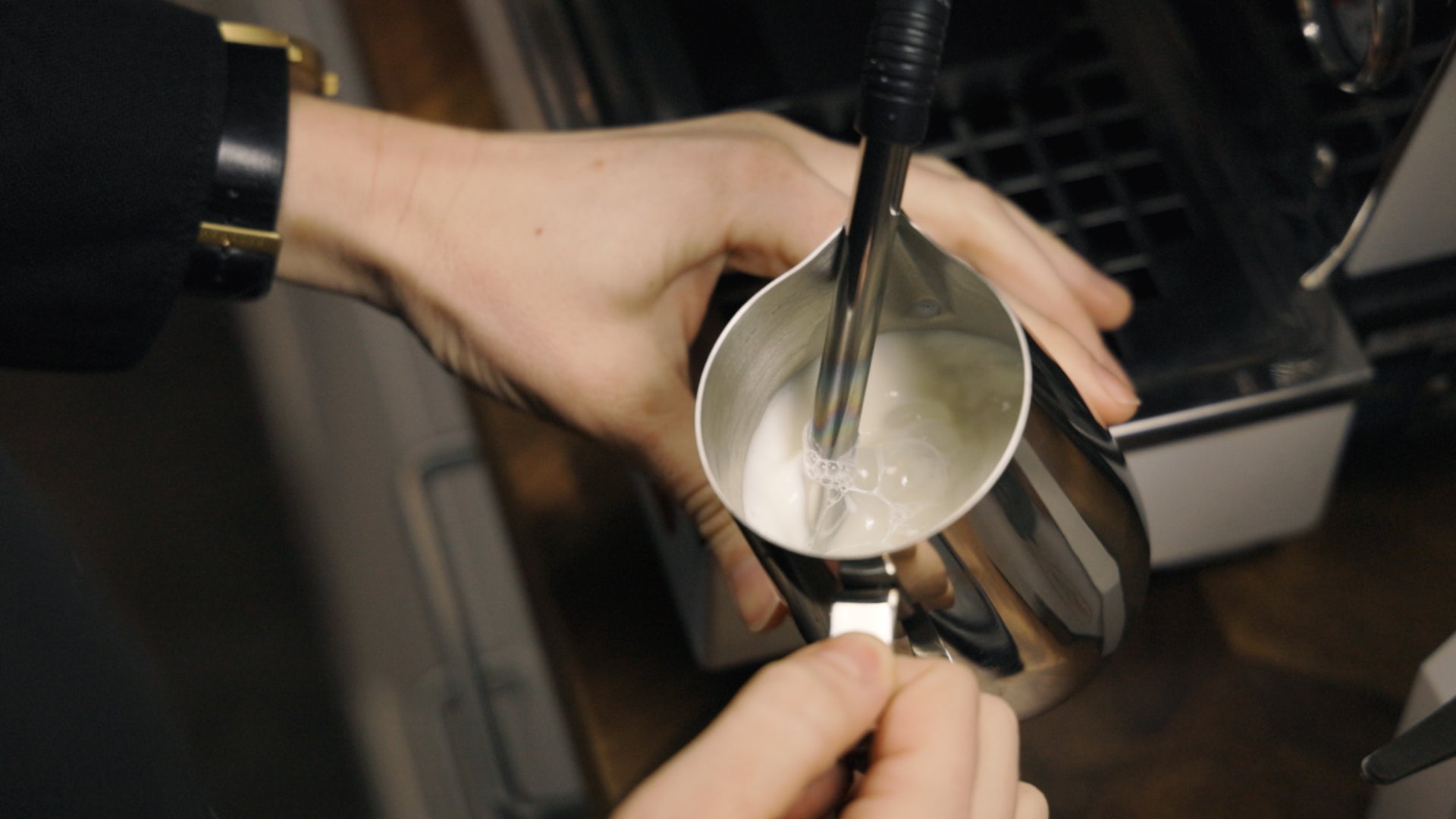Recognizing Espresso
Definition of Espresso
Espresso is an experience as much as a kind of coffee. Celebrated for its rich taste and syrupy substance, defined as a concentrated coffee drink produced by pushing hot water through finely-ground coffee beans, espresso. Derived from the Italian phrase “pressed out,” the very word “espresso” emphasizes on the harmony of sweetness, bitterness, and acidity by means of skill and accuracy in this brewing technique.
A few fundamental factors help one to create the ideal espresso:
- For best extraction, espresso demands a fine grind.
- Water should ideally be pumped through the coffee under almost 9 bars of pressure.
- Extraction of flavors depends on keeping a brew temperature between 90 and 96°C.
Knowing these basics increases one’s respect of this classic coffee drink.
A Synopsis of Espresso’s History
The trip of espresso started in Italy in the 19th century. Angelo Moriondo claimed the first formal espresso machine patent in 1884. This machine was more of an experimental tool than the well calibrated tools of today.
Important turning points in espresso history include in:
- 1910: Achille Gaggia debuted the lever-operated espresso machine to improve flavor extraction.
- 1947: The first automatic espresso machine made possible more consistent brewing.
From steam-driven models to modern machines competent of exact temperature and pressure control, espresso machines changed throughout the years to define the espresso culture we treasure now. Whether in one’s kitchen or a busy café, espresso is still both an art and a science that invites coffee drinkers all over to participate in its rich legacy.
The Ideal Espresso Shot
Elements Influencing Espresso Taste
Regarding the ideal espresso shot, various elements are rather important for the final taste. Learning these factors will help your brew go from good to great. Here are the key components to give thought:
- Coffee Dose: One needs to be constant in dosage. Starting with eighteen grammes of coffee for a double shot, several baristas advise. Key is consistency!
- Grind Size: Extractive behavior of your coffee grinds depends on their fineness. You’ll under-extract too coarse; too fine and you run the danger of bitterness.
- To maximize flavors without scorching the coffee, the water should ideally be between 90 and 96°C (194 and 205°F).
Although it can be daunting to discover that right balance, tweaking these elements can help you get closer to your perfect espresso shot.
Anatomy of a Shot Made from Well-Brewed Coffee
Doing a great espresso shot is like doing art; every component counts. Usually, a well-brewed shot has:
- Crema: The golden foam on the espresso marks taste richness and quality extraction. A well-prepared shot shown by a thick layer of crema.
- Body: This is the weight of the espresso on your palate; a balanced shot should have thick, syrupy consistency.
- A great espresso is defined by a harmonic combination of bitterness, acidity, and sweetness.
Knowing this anatomy helps young baristas to copy perfection in every cup. Whether at home or in a professional environment, one can always pull the ideal espresso shot by concentrating on the interaction among these components.
Equipment for Coffee Making Espresso
Different Kinds of Espresso Machines
Getting that ideal shot requires first selecting the correct espresso machine. These are the main kinds of machines you could take into account depending on different degrees of automation and control:
- Manual espresso machines let you fully control the brewing process by requiring you to apply pressure personally. For individuals who appreciate the craft of coffee-making, the practical method can be rather fulfilling.
- Semi-Automatic Espresso Machines let you start and stop water flow while the machine manages pressure, so preserving some degree of manual control. Home baristas who desire a combination of talent and convenience often choose this.
- Automatic Espresso Machines: By managing the water flow for you—ideal for people who value consistency and simplicity—these machines eliminate the guessing involved in making.
- If convenience is your first concern, these machines handle everything from grinding to brewing so you may enjoy excellent espresso with little effort.
Basic Instruments and Attachments
Beyond the espresso maker, numerous basic equipment and extras improve your brewing experience:
- Great espresso depends on freshly ground coffee in quality Burr Grinder. Get a burr grinder to get a constant grind size.
- A good tamper guarantees consistent compression of your coffee bed, which is absolutely essential for proper extraction.
- Scales: Perfect for determining shot weight and coffee dosage, they will assist you to precisely match brew ratios.
- Using a Weiss Distribution Tool (WDT), coffee grinds are equally distributed in the filter basket, therefore reducing channeling during extraction.
Investing in the correct tools can help you create perfect espresso shots right in your own kitchen, therefore proving your brewing ability every cup.
Choosing the Correct Coffee Beans
Coffee Beans Suggested for Espresso
Regarding espresso, the kind of coffee beans you decide upon will greatly affect the taste and quality of your shot. Two particularly noteworthy variants are these:
- Arabica: Often a favorite among espresso drinkers, Arabica beans are noted for their smooth, sophisticated tastes. Your espresso shots will have a wonderful complexity from fruity and floral to chocolaty. Usually grown at higher altitudes, Arabica is best for consumers who value complex taste sensations.
- Robusta: Think about including Robusta beans if you want a powerful, bold espresso. These beans taste more earthy, bitter and have a lesser acidity. Popular for espresso mixes, they also include more caffeine and help to create a thick, creamy crema.
Playing about with mixes of these beans can help you find your ideal espresso taste!
Things to Think About While Selecting Beans
Choosing the correct beans for your espresso goes beyond just taste; numerous considerations also come into play.
- Freshness: Always find out the roast date. Perfectly no more than two weeks old, freshly roasted beans will provide strong flavors.
- For espresso, medium to dark roasts are usually recommended since they release the natural sweetness and produce a balanced cup free of too much acidity.
- Look for packaging tasting notes to determine flavor profile. Knowing what each bean has to offer can help you make a wise decision whether your taste is for nutty, fruity, or chocolate.
These factors will help you to greatly improve your espresso experience and produce the ideal shot every time!
Tamping Methods and Grinding Tools
Value of a Constant Grind Size
The proper grind size is the first step toward the ideal espresso shot. The major filter hot water passes through is ground coffee, hence uniformity is quite important. Even flavor extraction is made possible by a homogeneous grind, so preventing any too sour or bitter notes. Here are some salient features to give thought:
- Usually advised for espresso is a medium-fine grind. This guarantees that the water passes across the grounds neither too fast nor too sluggish.
- Effect on Flavor: An uneven grind can result in an unbalanced shot. Should your shot come out too sour, it could be time to coarse the grind; too bitter? Try a finer level of adjustment.
Although determining the perfect grind size for your machine can seem like a science experiment, over time trial and error can produce the greatest results.
Appropriate Techniques for Tamping
Tamping comes next in great importance once you have the grind size under control. Good tamping methods provide consistent flavor extraction from the coffee bed by water. Correct approach is as follows:
- Apply consistent pressure while tamping—that is, level pressure. This guarantees that water can saturate the ground consistently and helps to reduce air pockets.
- Always pound the coffee grounds uniformly across the portafilter. An unlevel tamp can cause channeling, in which case water finds the route of least resistance and uneven extraction results.
Learning these grinding and tamping procedures will help you be on your way to make café-quality espresso shots right at home! Experimenting within these constraints helps you to identify the ideal cup for your taste. See the trip.
Learning the Brewing Method
Pressure and Temp of Water
Two crucial elements in creating the ideal espresso are pressure and water temperature. Espresso brewing calls for ideal water temperature between 200 and 203°F (93–95°C.). The hot water picks the tastes and vital oils of coffee at this temperature without burning the grounds.
Just as important is pressure; your espresso machine must create at least 9 bars of pressure for best extraction. This high-pressure atmosphere drives the hot water through the finely ground coffee, therefore enabling a rich, concentrated shot topped with a lovely layer of crema. Recall that constant maintenance of these criteria will lay the groundwork for your brewing success.
Taking the Perfect Shot
While perfecting an espresso shot requires experience, following a few simple guidelines will help you get there. Measuring out roughly 18 to 20 grams of coffee, then grind it to a medium-fine consistency.
Tamp firmly yet equally to guarantee consistent compression of all the coffee grinds, therefore avoiding channeling.

Leave a Reply